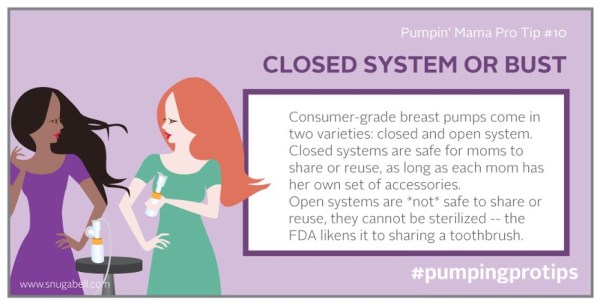by Jessica Martin-Weber
Just kidding. I was decidedly not joyful.
I had not-so-nice-words for my pump, even though I like my pump and even though it typically seems to whisper encouragement when I’m pumping, this particular morning I swear it was hissing “eff you, eff you, eff you…”

Which is, honestly, kind of exactly what it is like. You just can’t REALLY know until you’re in it. There’s no way I would have truly understood just how much I’d be feeling my boobs until I was actually living it.


Skipping sleeping in. I wanted to sleep in that morning, desperately. There was no way. My breasts were killing me and I didn’t want to risk a clogged duct or possibly hurting my supply by not emptying them when they were full because my baby slept through a feeding. I skipped sleeping in to hook up to a machine that would empty my breasts. Naturally, when I was done putting everything away and laid back down hoping to catch a little more shut-eye, my baby woke up and was ready to feed and play.
It may be unglamorous but that’s a parenting fact, very little of bringing up tiny humans results in feeling put together and ready for the red carpet. But you can’t beat the smiles and snuggles that come with it!
 Drawing from a diverse background in the performing arts and midwifery, Jessica Martin-Weber supports women and families, creating spaces for open dialogue. Writer and speaker, Jessica is the creator of TheLeakyBoob.com, co-creator of BeyondMoi.com, freelance writer, and co-founder of Milk: An Infant Feeding Conference. Jessica lives with her family in the Pacific Northwest and co-parents her 7 daughters with her husband of 21 years.
Drawing from a diverse background in the performing arts and midwifery, Jessica Martin-Weber supports women and families, creating spaces for open dialogue. Writer and speaker, Jessica is the creator of TheLeakyBoob.com, co-creator of BeyondMoi.com, freelance writer, and co-founder of Milk: An Infant Feeding Conference. Jessica lives with her family in the Pacific Northwest and co-parents her 7 daughters with her husband of 21 years.























 Kelly is a mother of two from St. Louis, Missouri, who lived a good chunk of her adult life in Houston, Texas. She and her hunk of a husband struggled with infertility for 5 years and had multiple miscarriages before having their first child in 2014. Prior to starting a family, she taught 7th grade life science at a college preparatory charter school for low-income, minority students in Houston. When she’s not nursing her 5 month old or telling her 21 month old to stop throwing balls at his sissy’s head, Kelly enjoys hanging out with her husband, binge-watching Gilmore Girls, and writing music. Despite many struggles with breastfeeding, Kelly nursed her son for 13 months; 6 of those while pregnant with her daughter. In addition to being passionate about breastfeeding, Kelly loves baby wearing, cloth diapering, staying up to date on car seat safety, and having grandiose dreams of being a midwife someday. In the meantime she’ll stick to chasing her sports-nut toddler around the neighborhood and hoping that she remembers to put her boob away before answering the front door.
Kelly is a mother of two from St. Louis, Missouri, who lived a good chunk of her adult life in Houston, Texas. She and her hunk of a husband struggled with infertility for 5 years and had multiple miscarriages before having their first child in 2014. Prior to starting a family, she taught 7th grade life science at a college preparatory charter school for low-income, minority students in Houston. When she’s not nursing her 5 month old or telling her 21 month old to stop throwing balls at his sissy’s head, Kelly enjoys hanging out with her husband, binge-watching Gilmore Girls, and writing music. Despite many struggles with breastfeeding, Kelly nursed her son for 13 months; 6 of those while pregnant with her daughter. In addition to being passionate about breastfeeding, Kelly loves baby wearing, cloth diapering, staying up to date on car seat safety, and having grandiose dreams of being a midwife someday. In the meantime she’ll stick to chasing her sports-nut toddler around the neighborhood and hoping that she remembers to put her boob away before answering the front door. 







